How Much Does It Cost to Gravel a Driveway?
If you’re looking to build a driveway, there are many options available when it comes to materials. From asphalt, concrete, gravel, and various other types of materials, you have plenty of choices to pick from.
Gravel is a driveway material that people like to use for a variety of reasons. Gravel is cheap, it can be quickly installed, and can be relatively low-maintenance depending on how it’s installed. There are, however, a couple of different ways to install gravel and they differ in many areas, especially the cost.

In case you’re looking to build a gravel driveway, let’s go through a comprehensive breakdown of exactly how much it’s going to cost :
How Much Does Gravel Cost?
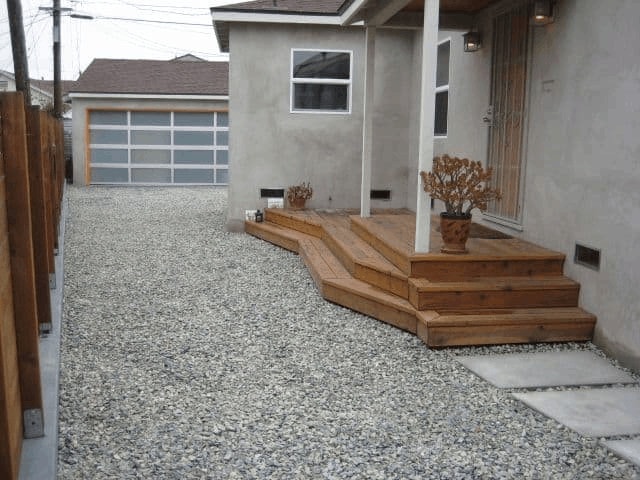
If you’re wondering how much it costs to gravel a driveway, the answer is not very much. Gravel is one of the cheapest paving materials available. Since it consists of many small pieces of rock, it costs next to nothing to produce, and the low cost is passed on the consumer in the form of dirt-cheap prices.
Gravel is usually sold by the cubic foot, so the question of cost to put in a gravel driveway will usually net you an answer in price per cubic foot. Gravel is sometimes sold by the ton, though, and even less frequently by square foot.
The cost to build a gravel driveway in square feet is about $0.50 to $2.00 per sq ft;by cubic yard is about $40 to $55; and by the ton is about $50 to $65.
However, different types of gravel have varying prices, and the cost of delivery and labor may be factored in as well, depending on where and how you source your gravel. For materials, delivery, and spreading, the cost to have a gravel driveway installed is around $60 per cubic yard. If you purchase the gravel on your own but hire laborers to spread it, the average hourly wage is $40 to $50.
The size of your driveway is directly related to the cost of installing a gravel driveway, in addition to material prices.
For instance, the following examples are the cost by cubic yard, in loose gravel only:
$31 – $178 – Arizona gravel
$96 – $140 – Black gravel (lava rock)
$74 – $155 – Bluestone gravel
$15 – $25 – Class 5 sand and gravel
$16 – $75 – Crushed concrete
$35 – 54 – Crushed limestone
$35 – $80 – Crushed marble
$14 -$120 – Crushed shells gravel
$51 to $54 – Crusher run gravel
$38 – $75 – Decomposed granite
$30 – $70 – Drainage rock
$29 – $86 – Pea gravel
$60 – $90 – Pebble mix
$100-$150 – Quartz gravel
$25 – $50 – Recycled and crushed asphalt
$47 – $70 – River rock
$25 – $33 – Road base gravel
$38 – $62 – SB2 sub-base gravel
$10 – $25 – Screening or stone dust
$28 – $85 – Shale
$35 – $80 – Slate Chips
$35 – $54 – Steel slag rock gravel
$75 – $129 – White gravel
How Much Do Permeable Pavers with Gravel Cost?
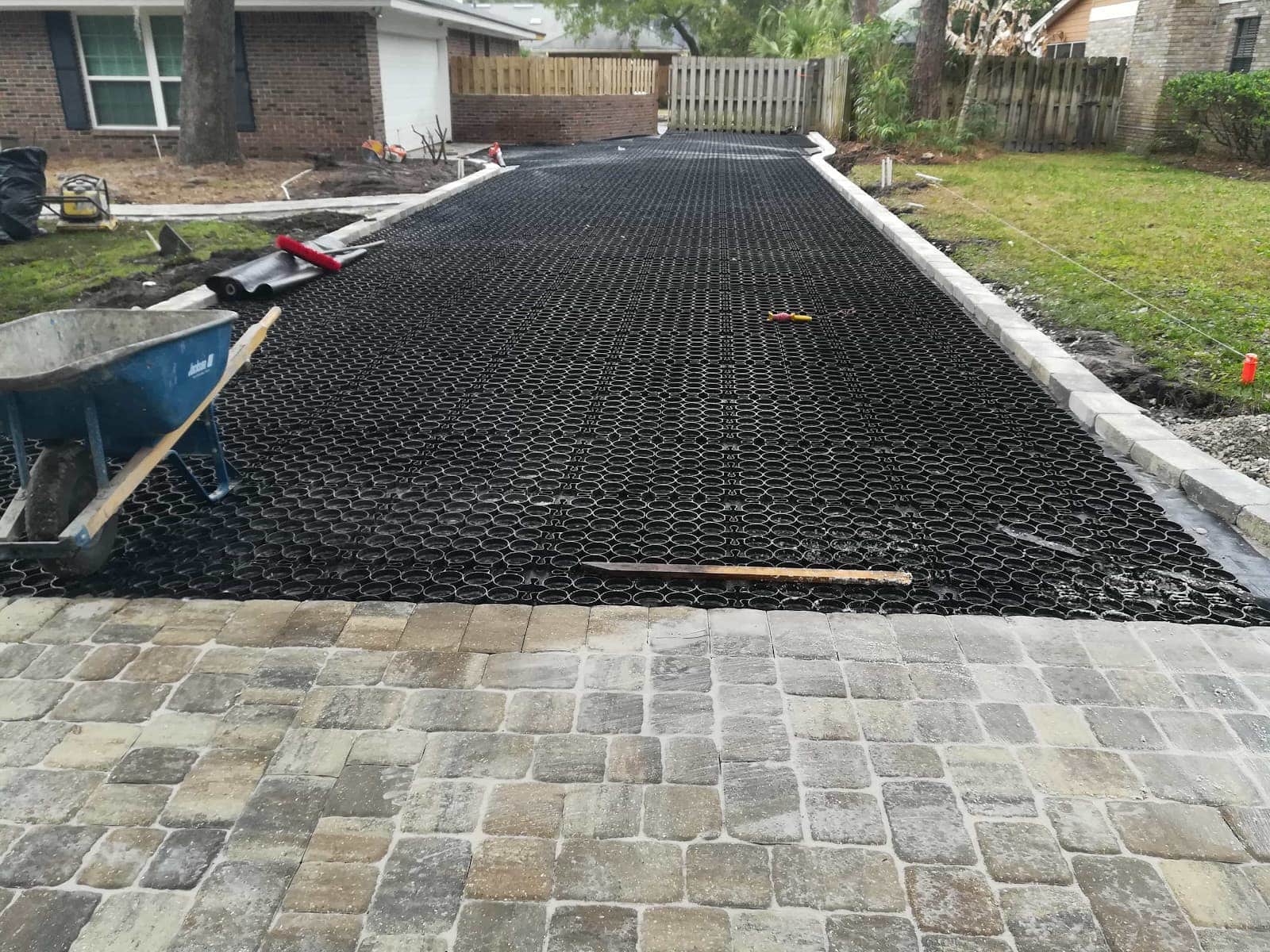
Permeable pavers are the more favorable way to install gravel. They stabilize the gravel and protect it from getting easily crushed. TRUEGRID permeable paver driveways are an excellent drainage system for stormwater, with a 8 to 12 nch sub-base beneath the surface. They’re made from 100%-recycled plastic and they are incredibly durable.
The independent labor pricing for gravel delivery and spreading remains the same, the cost of having professionals install permeable grid pavers filled with gravel is starts about $8 to 10 per sq ft.
TRUEGRID PRO LITE pavers come in packs of 18, and will cover 72 sq. ft. per pack. Each pack of Pro Lite pavers costs $187. TRUEGRID PRO PLUS pavers are made for heavier vehicles and come in packs of 10, covering a total of 40 sq. ft. per pack. Pro Plus pavers cost $156 per pack. Larger areas including parking lots or very large driveways can be shipped palletized.
TRUEGRID is the Best Choice for Building Driveways Out of Gravel
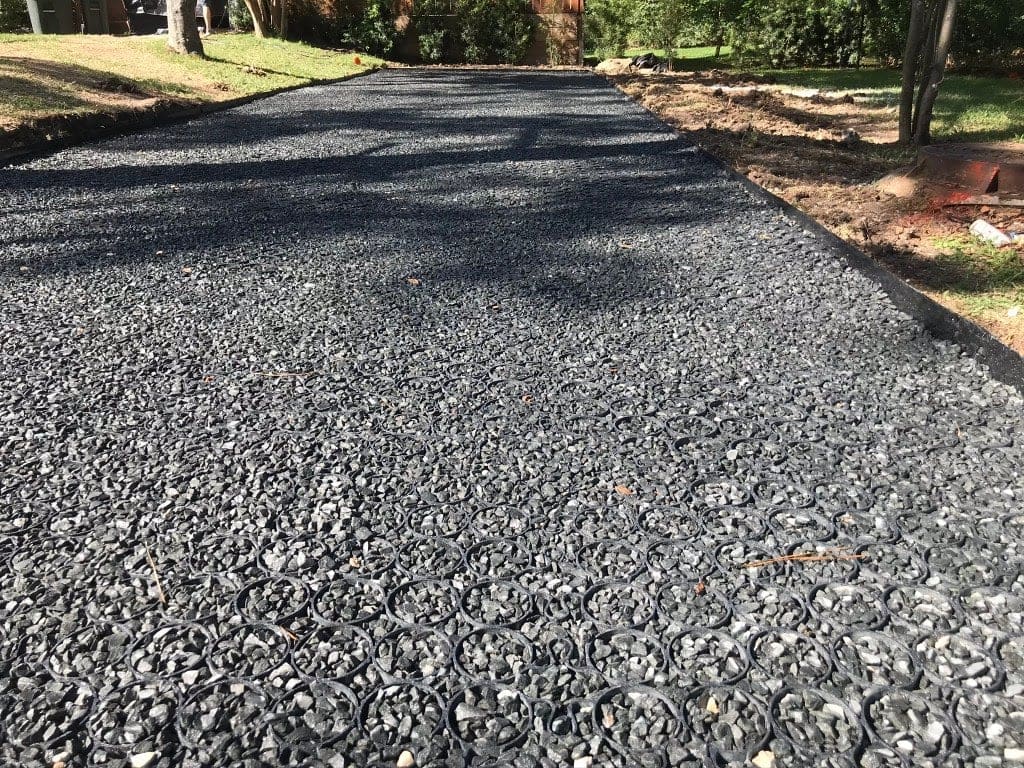
The extra cost of installing a gravel driveway with TRUEGRID permeable pavers is well worth it, saving you money on maintenance throughout the lifetime of your driveway. They also provide value by eliminating driveway flooding and lasting over 46 years with almost no maintenance required.
If you want to build the highest-quality gravel driveway imaginable, call TRUEGRID today to get in touch with a pavement specialist for a free quote.
For those of us who live on the beach or in a sandy area, driveways can be a real concern. Sand is one of the least cooperative materials to build pavement on, which is why you don’t see asphalt or concrete pavement laid directly on sand. Sand is unsteady and it shifts.
It also soaks up water which changes its composition greatly. All of these factors contribute to making sand completely incompatible with impermeable pavement such as asphalt and concrete. However, where there’s a will, there’s a way. That way is permeable pavement, of course.
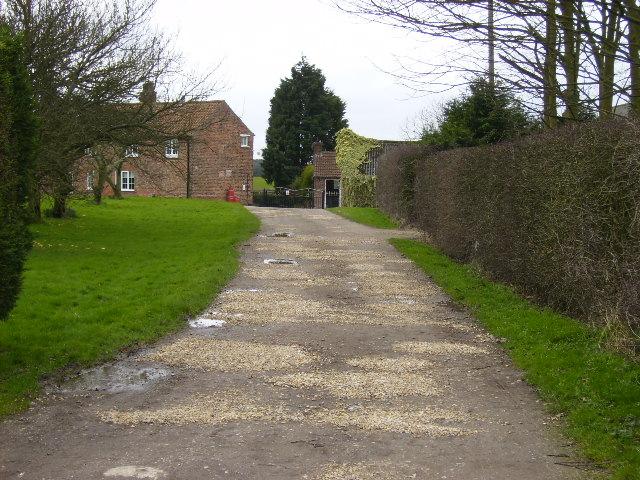
Permeable pavement can be installed in such a way that it stays firmly in place and is unaffected by any amount of water that gets on it. It cannot flood when properly installed, and some types of permeable pavement are even impervious to common outside influences such as UV rays, wind, and other factors which would normally degrade other types of pavement.
If you live on the beach or in a sandy area where you need a place to park your vehicles, let’s look at the easiest and most efficient way to build a gravel driveway on sand.
Sand Requires a Special Paving Solution
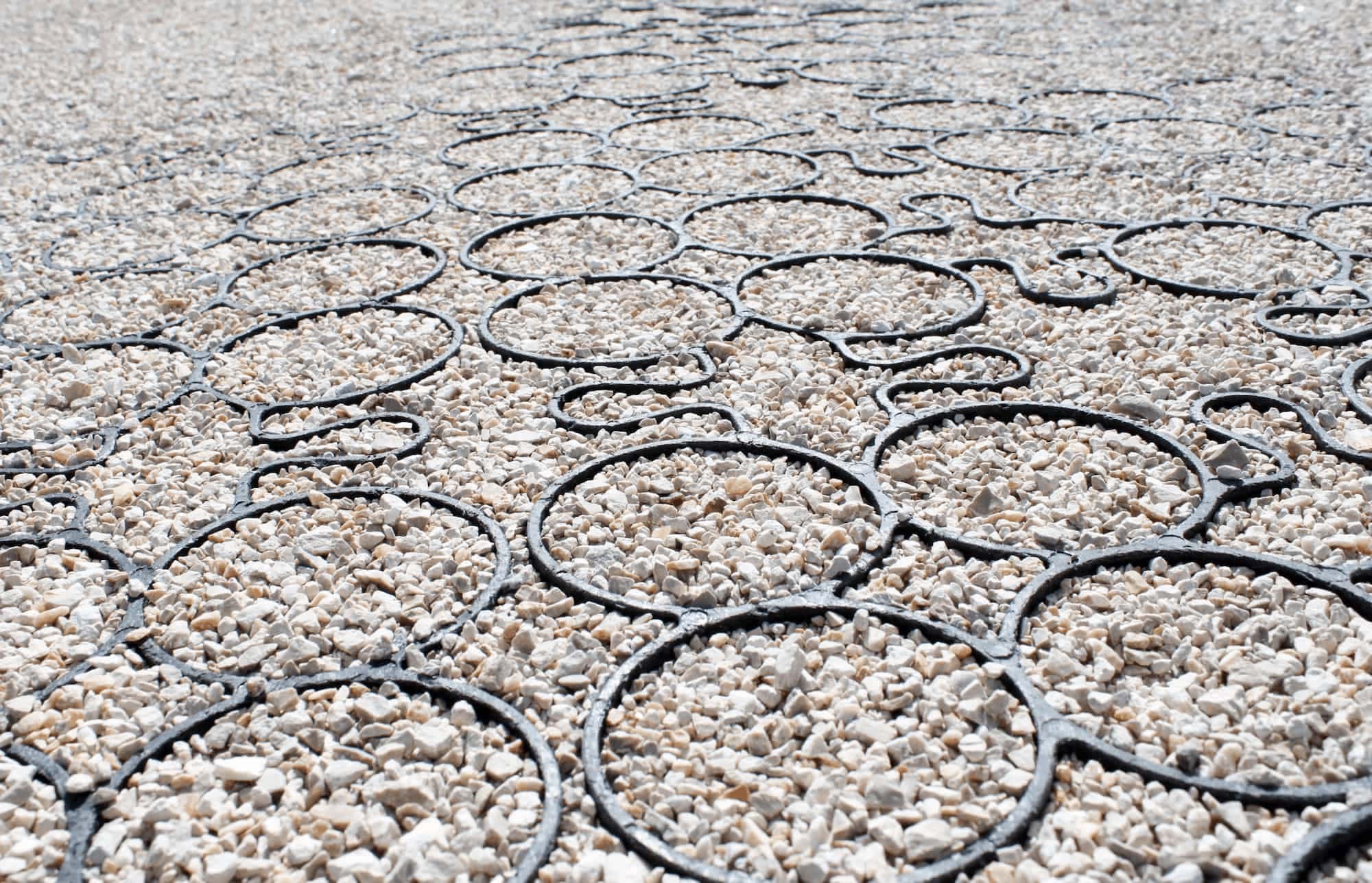
Sand is maybe the single hardest material to work with when trying to lay pavement. For this reason, only permeable pavement will stand up in a sandy environment.
However, not all permeable pavement is created equal. Some types of permeable pavement such as loose gravel, interlocking concrete pavers, porous concrete, and porous asphalt are unsuitable for use on sand.
This is because, among other things, they are not rooted in the soil at all. Interlocking concrete pavers can be rooted in the soil on top of a sub-base, but the cracks between the pavers would easily become clogged with sand and mud. The other types of pavement mentioned would shift and move too easily to be relied on for building a driveway over sand.
Only TRUEGRID Can Create a Long-Lasting Driveway on Sand
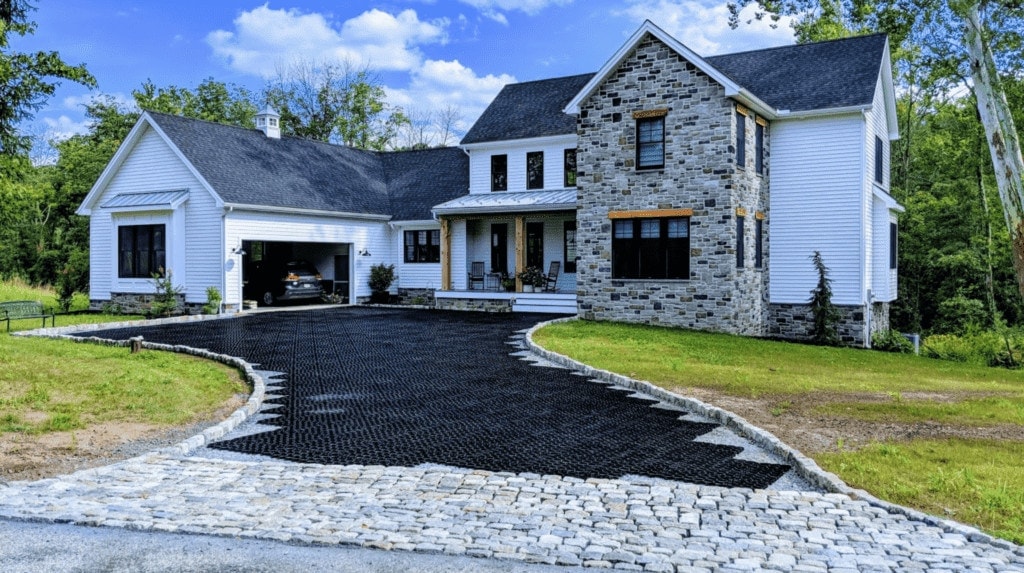
The only suitable material for building a driveway that will last a long time, remain sturdy, and not require much maintenance is permeable plastic pavement. Permeable plastic pavers like those made by TRUEGRID are perfectly suited for use in sandy areas as well as all other types of terrain.
What makes these pavers the only option to stabilize a sand driveway is the fact that they are laid over the top of a sub-base that is filled with gravel. Most often, the sub-base only reaches a depth 8 inches, but your driveway can be excavated to whatever depth is necessary to provide a stable sub-base for the pavers.
The installation process is also surprisingly easy for TRUEGRID PRO LITE and TRUEGRID PRO PLUS pavers. First, the driveway is excavated to the proper depth. Then, a piece of fabric is laid at the bottom of the pit to prevent gravel from migrating into the soil and to act as a weed block. Next, the excavated area is filled to the brim with gravel which is then compacted until it’s level and solid. Afterward, TRUEGRID permeable pavers are snapped together into place over the gravel pit. They fit together as easily as LEGO blocks.
Finally, more gravel, usually of a finer grade, is poured into the top of the pavers and can be easily compacted into their empty cells with a vehicle or heavy roller. This fills the cells with gravel and keeps them in place without allowing them to shift, even under heavy traffic. This is the entire installation process in a nutshell and it can take as little as one day to complete. Family members can even help out!
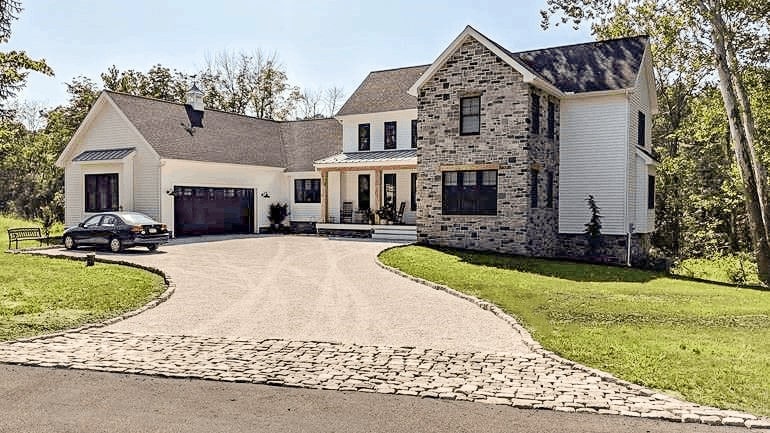
Once your sand and gravel driveway is finished, you’ll have a sturdy, durable, level surface with plenty of traction for your vehicles. Your TRUEGRID permeable paver driveway will only require minimal maintenance throughout its lifetime, and the pavers can last up to 40 years before needing to be replaced. They won’t be eroded by wind, water, or sand, or UV rays.
TRUEGRID permeable pavers are stylistically diverse and eco-friendly. There are many different types and colors of gravel that can be used to create various designs.
They can drain an incredible amount of liquid per hour with ease, so you’ll never have to worry about flooding from rainstorms. They also greatly reduce the chance of mud getting on your vehicle from wet sand.
TRUEGRID Is the Perfect Solution to Building a Driveway on Sand
If you want to know how to build a driveway on sand, TRUEGRID permeable pavers are the answer. They are more durable than any other permeable pavement material, and they will never flood from rain and won’t shift or require extensive maintenance either. If you’re looking for the number one paving on sand solution, be sure to call TRUEGRID today for a quote.
Driveways can be made from many different materials, decomposed granite being one of the most popular choices. Decomposed granite is derived from regular granite. However, it’s a version of granite that’s been so weathered it easily breaks into smaller pieces.
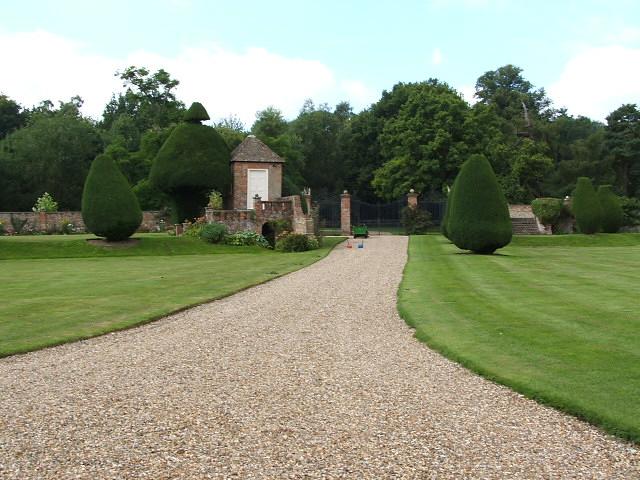
Decomposed granite can sometimes break down into such small pieces that it resembles sand. You might think this doesn’t sound like a very durable material to build driveways with, but there are multiple ways to utilize decomposed granite in a driveway.
It is actually one of the most popular forms of permeable pavement, so in case you’re looking to build a new driveway or repave your old one, let’s take a look at the pros and cons of decomposed granite as it pertains to driveways:
Why Do People Use Decomposed Granite in Their Driveways?
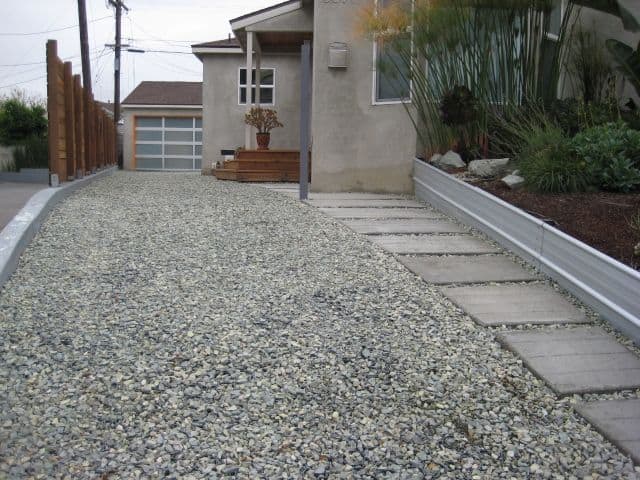
A decomposed granite driveway has many benefits that certain homeowners find attractive. It comes in a variety of colors that allow you stylistic versatility in your driveway. Yellow, brown, white, grey, and dark blue are just a few of the available colors, and it’s also very cheap.
The intial cost of purchasing and installing a crushed granite driveway is very low, especially if you leave it unstabilized. By adding stabilization, however, it can last years and years before needing to be replenished. The installation process is also very fast and do not require days of effort like asphalt and concrete driveways do when they need to be resurfaced or resealed.
Another huge benefit of a decomposed granite driveway is that it’s extremely permeable and eco-friendly. It requires very little equipment to produce and install, and allows stormwater to drain directly through it. It is excellent for mitigating driveway flooding and lessens the need for any extra drainage. .
What Are the Downsides of Decomposed Granite Driveways?
There are many downsides to using unstabilized decomposed granite for a driveway. Without proper stabilization, it is not quite as permeable. It will still drain liquid, but at a much slower rate than if the driveway were to be excavated and stabilized with pavers. Also, it actually encourages weed growth if laid over plain grass.
The answer to the question “is decomposed granite good for driveways?” depends on how it’s installed. For instance, the lifespan of unstabilized crushed granite is much shorter than it is when installed with stabilizing pavers. Without stabilization, the decomposed granite will both spread and rut or becoe so hard over time that it becomes impermeable and doesn’t drain.Rain, snow, UV rays, and traffic will wreak havoc on loose granite if it is laid without pavers.
Loose granite will also spread easily. Not only does it turn to dust before long, it spreads and migrates out of your driveway area. This can lead to ruts, bare spots, and puddles developing in your driveway. All of these issues can be avoided with pavers.
What’s the Best Way to Use Decomposed Granite in a Driveway?
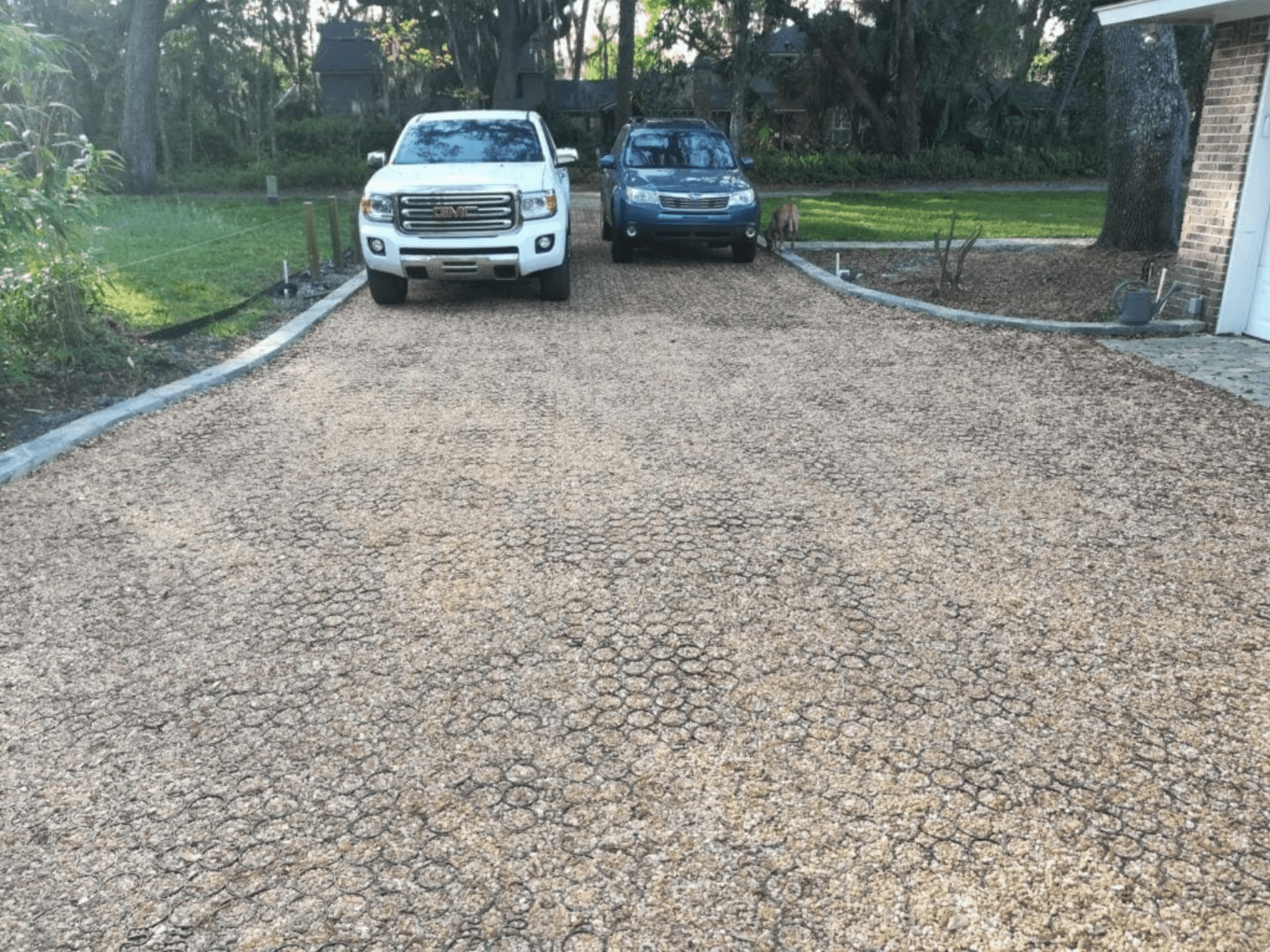
Using pavers to stabilize your decomposed granite is the only way to build a long-lasting, functional driveway. TRUEGRID, for instance, makes products such as TRUEGRID PRO LITE and TRUEGRID PRO PLUS, which can both be used to effectively stabilize granite and allow it to perform at its highest potential.
The installation process for both paving systems is incredibly simple. First, the driveway area is excavated to a depth of 6 to 12 inches depending on drainage requirements and a filter fabric is laid at the bottom to prevent gravel migration into the soil as well as block weed growth from below. Next, the excavation is filled with gravel which is then compacted with a heavy roller.
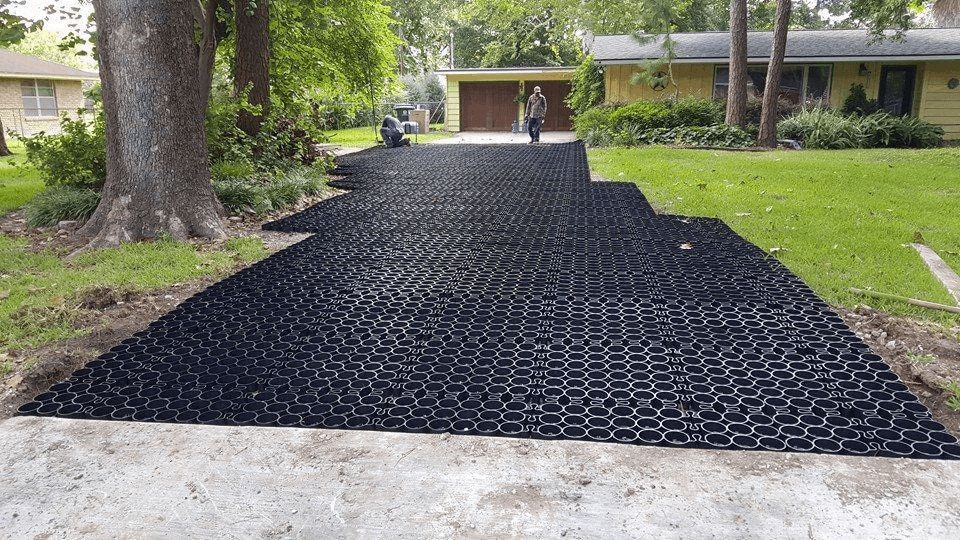
Afterward, the interlocking permeable pavers are snapped together like LEGO blocks over the top of the level pit. Then, decomposed granite is poured into the top of the pavers and pressed into the empty cells with a vehicle or heavy roller. This weighs the pavers down and prevents them from shifting, while also providing a level surface to drive on.
TRUEGRID permeable pavers are eco-friendly, and are made from 100%-recycled plastic. They are durable enough to last over 60 years. They require very minimal maintenance and can easily drain extremely heavy rainfall without any issues.
Stabilize Your Decomposed Granite the Right Way with TRUEGRID
TRUEGRID permeable plastic pavers are the best option for building a durable, functional, and beautiful driveway out of decomposed granite. They eliminate nearly all of the downsides of unstabilized loose granite, allowing you to enjoy the crushed granite without worrying about ruts, spreading, or flooding.
Permeable pavers from TRUEGRID are one of the most eco-friendly paving materials on the planet. If you want to build a crushed granite driveway of the highest quality, make sure to call TRUEGRID today to get in contact with a dedicated pavement professional.
Permeable hardscapes have become extremely popular lately. A permeable hardscape has the ability to drain water directly through itself. This means that the drainage system is built into the hardscape, and requires less or even zero extra drainage features to keep the surface from pooling or flooding.
Of course, there is a ton of variety within the permeable hardscape niche. There are many different types of permeable hardscaping and they all have pros and cons. In case you’re interested in implementing some permeable hardscaping, let’s take a look at 4 different types and how they stack up against each other:
1. Loose Gravel
Loose gravel is the cheapest and most basic form of permeable hardscape. You can use a border to keep the gravel in place, but it can work well enough without one. Especially for use in rural driveways or parking lots that don’t get a ton of traffic, gravel does just fine as a permeable hardscaping material that helps prevent flooding and doesn’t require any additional drainage.
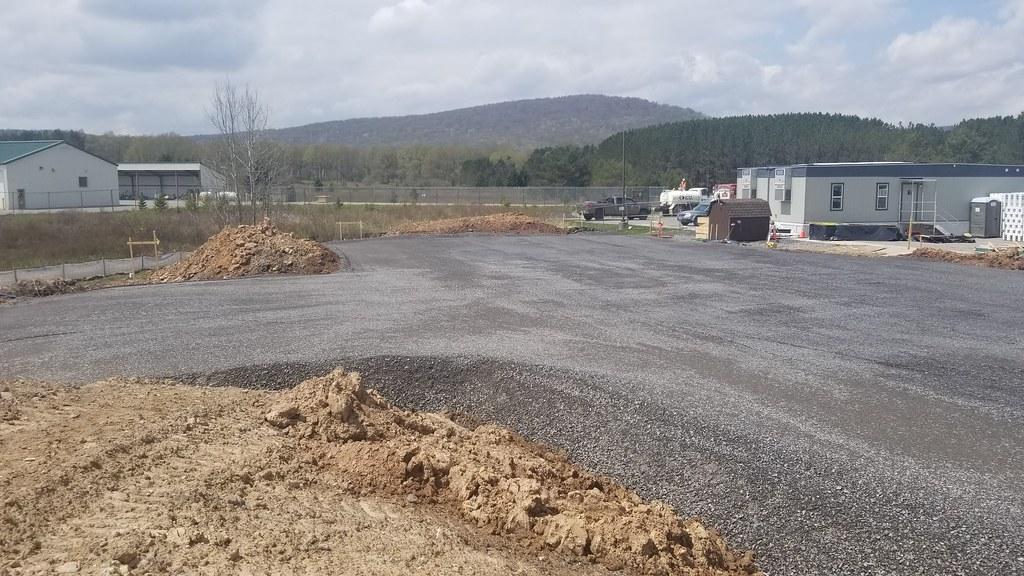
Loose gravel is a vastly inferior material for any hardscaping purpose beyond this, however. It easily spreads and thins, requiring frequent raking and the addition of new gravel. It cannot handle high rates of precipitation and because of how easily it spreads, ruts can develop.
Ruts tend to pool with water and become mud puddles, which negates the positive effects of permeability.The gravel becomes compacted and impermeable over time.Loose gravel also turns to dust which requires extra maintenance to prevent it from becoming a problem.
2. Permeable Asphalt/Concrete
Another type of permeable hardscape is permeable asphalt or concrete. Permeable asphalt and concrete both function in the same way, by letting liquid drain through them and into the soil below. They are considered partially permeable, because the way the material is designed only allows it to drain water at a very low rate.
These semi-porous hardscapes can be a solution for eliminating some extra drainage requirements and work as a supplement to other drainage techniques, but permeable asphalt and concrete are not suited for draining any significant amount of stormwater.
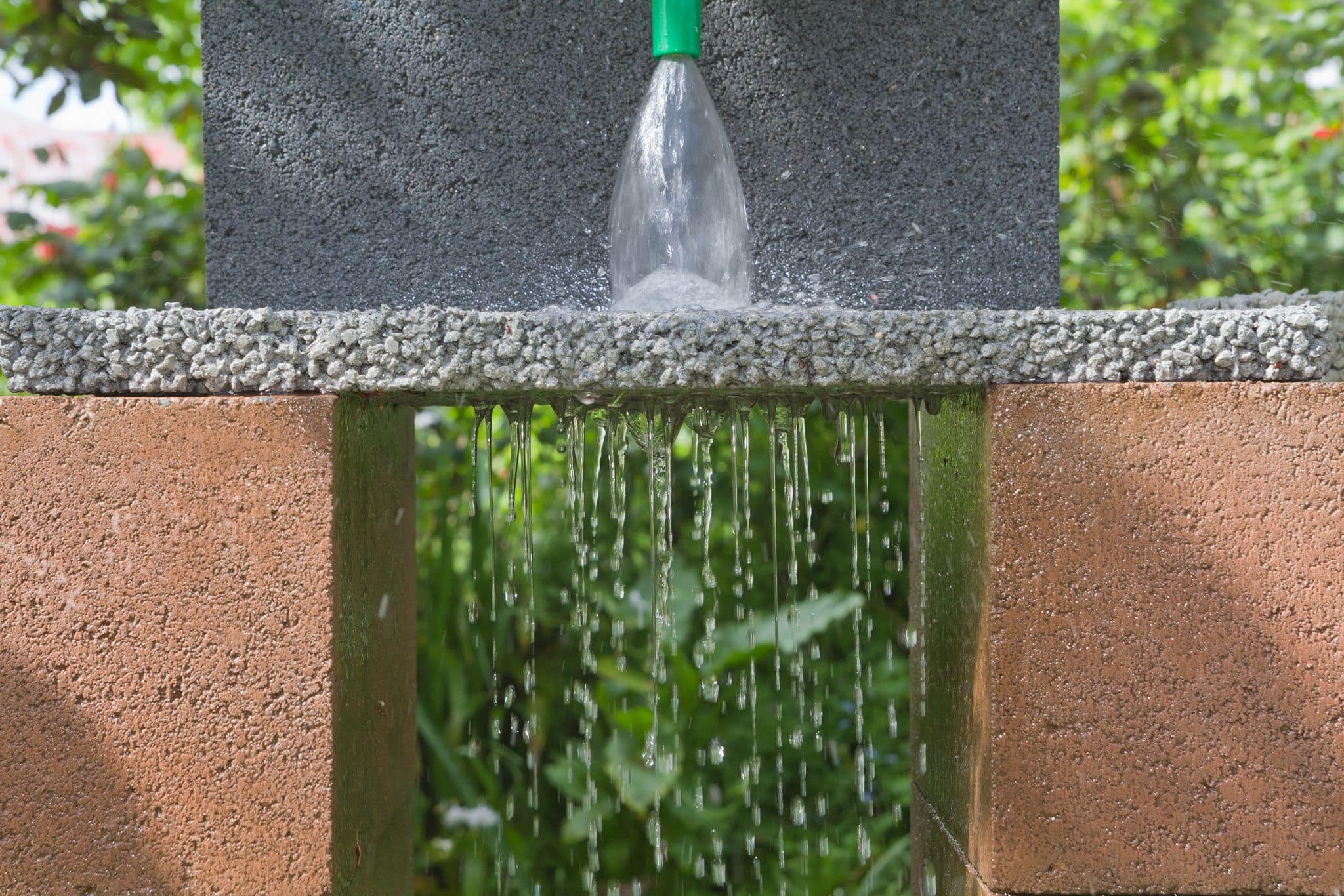
These porous hardscapes can flood when faced with high rates of precipitation. They clog easily and require expensive maintenance to maintain permeability. Both porous asphalt and concrete are relatively fragile and also need to be resealed and resurfaced periodically making them the more expensive types of permeable hardscaping both initially with upfront costs and long term maintenance. They are most effective in small decorative areas to supplement other drainage..
3. Permeable Interlocking Concrete Pavers
PICPs are yet another type of permeable hardscape. They’re concrete pavers that are interlocked but have spaces in between them. This creates a walkable, drivable surface that also lets liquid drain directly between the pavers and into the soil below. One of the main benefits of PICPs is their beauty. They can be used to create intricate patterns for sidewalks and other hardscaped areas.
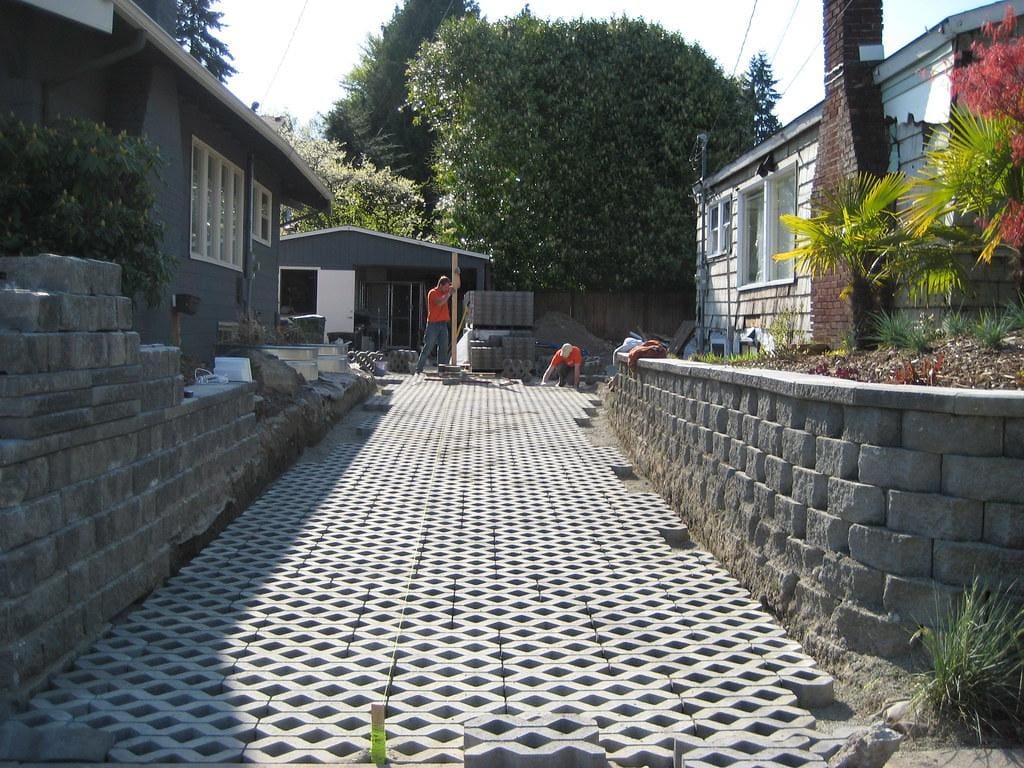
They have many disadvantages. They are expensive and the gap between the pavers clogs over time rendering them essentially impervious. They don’t work well for parking lots, however, because each individual paver is subject to wear and tear around the edges. When filled with grass the grass tends to choke and die. They degenerate very quickly, especially in climates with intense freeze/thaw cycles and in places where they are tread upon frequently.
4. Permeable Paver Grids
Permeable pavers usually come in grids and are made from plastic. TRUEGRID, for example, makes their permeable pavers from 100%- post-consumer recycled plastic. TRUEGRID pavers easily snap together over a base filled with compacted gravel which provide as a detention reservoir for stormwater. Then, the empty cells on the surface of the gravel pit are filled with more gravel and driven over, making the surface level and weighing the pavers to the ground. These gravel filled grid pavers drain instantly at over 1000 inches per hour and remain permeable over their expected life of 60 years when filled with the recommended gravel.
Many different types of gravel can be used in TRUEGRID permeable pavers and the pavers themselves are durable enough to last over 60 years with minimal maintenance. They’re also 100% permeable, and able to handle even the heaviest of downpours without flooding. They work in all climates and soils and are protected against to temperature fluctuations and UV rays as well.
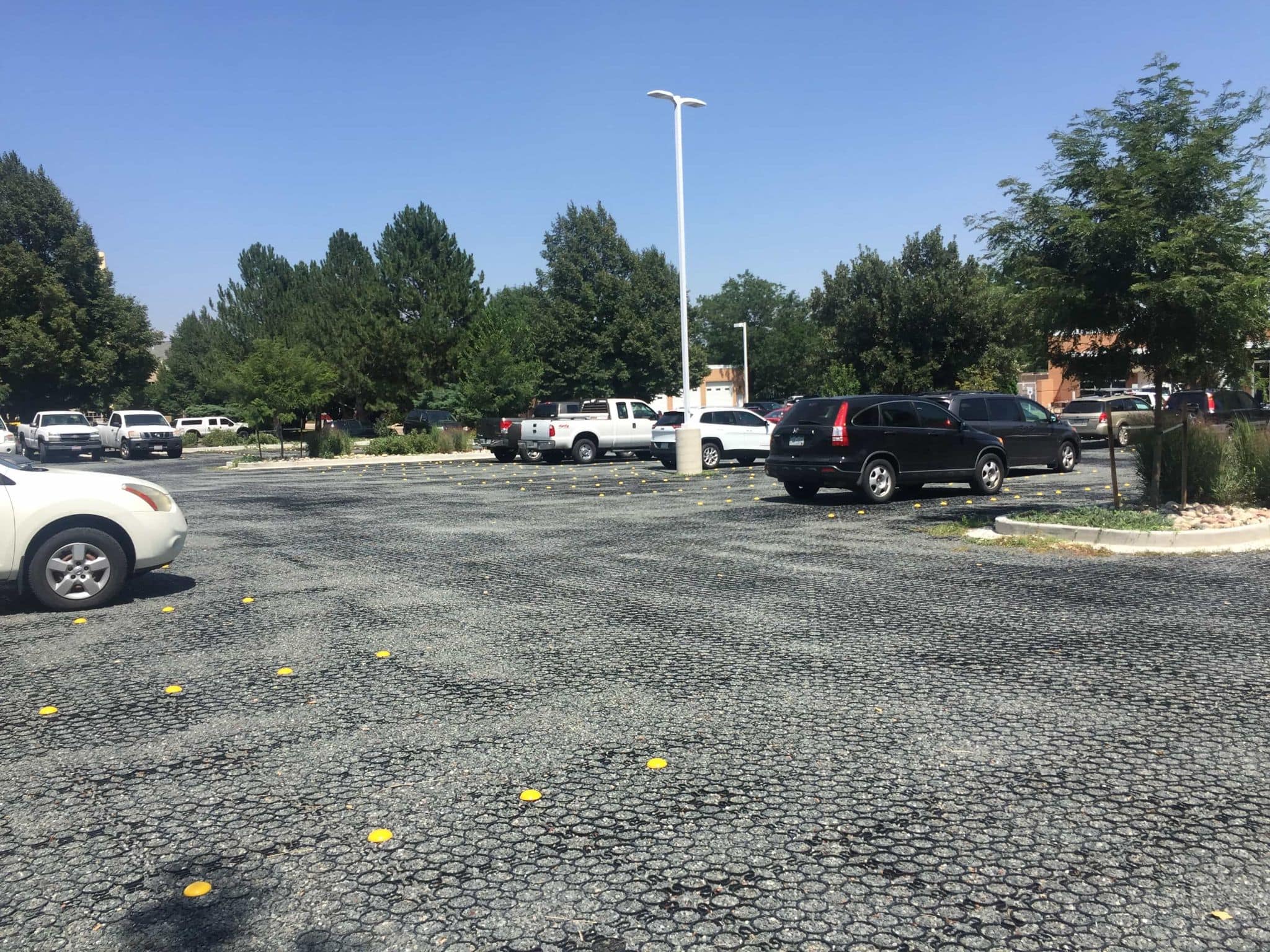
One of the reasons TRUEGRID permeable pavers are the best material to build a permeable hardscape with is that they are incredibly versatile. You can use TRUEGRID PRO LITE or TRUEGRID PRO PLUS for parking lots, sidewalks, walkways, fire lanes, and any other surface that might experience heavy, frequent traffic from vehicles. There are also accessories that you can easily snap right into the pavers that mark parking spots or work as reflectors, for example.
The TRUEGRID ROOT paving system is also available for those who want to stabilize a grass area so that it can be driven on without suffering damage. TRUEGRID ROOT is nearly invisible once installed and can turn any plot of grass into a natural driveway or parking spot. It’s also the easiest and fastest permeable paving surface to install, as you only need to lay it down and drive over it to install it.
Permeable Paving Comes in Many Forms
There are several permeable paving materials you can choose from, but only TRUEGRID provides the most permeablity at the lowest costs. You can even save land but reducing detention pond size.. Beauty, durability, versatility, low maintenance needs, and eco-friendliness are just a few of the benefits you’ll reap from a TRUEGRID permeable hardscape.
If you’re in need of an innovative paving solution that can act as a drainage system as well, call TRUEGRID today and get in touch with a pavement specialist who can help you out.

